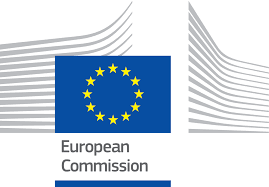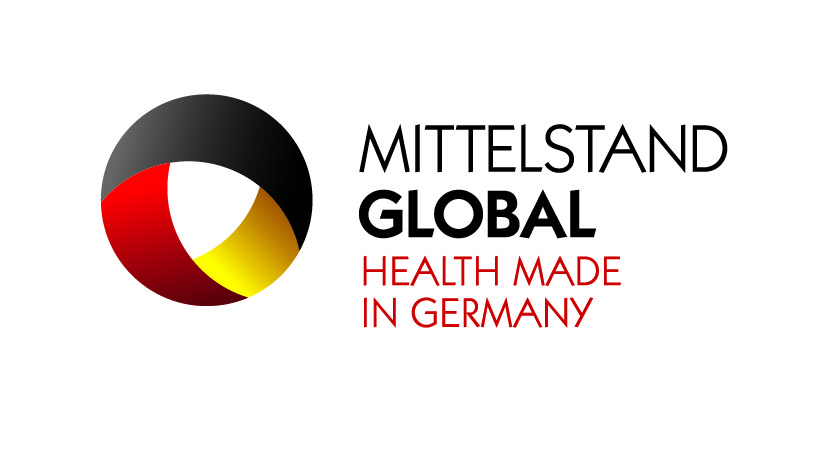Funded projects 2005 - 2023
Mosaiques diagnostics is member/participant of a multitude of respectable consortia and research projects and during our time in the field of clinical proteomics we achieved a valued position in several renowned scientific networks.
54.

ProSTRAT-AI
The ProSTRAT-AI international project is funded by EUREKA network and aims to improve intervention in patients with prostate cancer, by stratifying the patients to those that can continue active surveillance and which would require immediate treatment.
53.
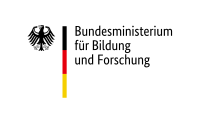
Post acute sequelae of SARS-CoV-2 infection (PASC), also referred to as long COVID, is the most frequent, yet poorly characterised sequelae of COVID-19. It has tremendous, unpredictable consequences on personal health and socioeconomic status of affected individuals, and on global economic issues. UriCov is a multidisciplinary, comprehensive project with the aim to investigate in depth the molecular phenotype(s) of individual patients previously infected by SARS-CoV-2 and identify patients at risk of PASC. This will be achieved through multi-disciplinary research based on omics and clinical data in a bioinformatics framework, based on the hypothesis that endothelial damage is a key event in PASC. The developed molecular tools may allow patient stratification to initiate personalised treatment for prevention of PASC prior to symptoms and to decrease the PASC incidence. UriCoV will also provide missing fundamental knowledge on the molecular pathophysiology of PASC.
52.

Diabetes and the associated cardiovascular and renal complications are among the largest burdens for patients, as well as the public healthcare system. Several different drugs that show a significant benefit are available, with the largest benefit produced if given at the earliest possible time point. However, guidance on which specific medication to apply per patient is currently lacking. Partners in this consortium have investigated urine and plasma proteome in multiple clinical studies and identified several biomarkers expected to predict drug response. In addition, the consortium has access to large biobanks of diabetic patients undergoing different types of pharmacological intervention. Building on these extensive available resources, SIGNAL targets to evaluate and establish predictive biomarkers that enable guiding anti-diabetic treatment with respect to prevention of chronic kidney and cardiovascular disease. The study will establish and prompt advancement towards clinical implementation of predictive biomarkers-opening the way towards the personalised treatment of people with diabetes.
51.
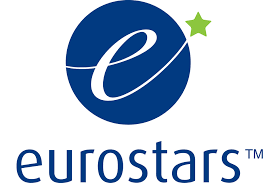
Gen209
The consortium partners aim to jointly undertake major steps towards the transition from the preclinical to clinical development of GEN209 – a drug candidate for triple-negative breast cancer (TNBC). This will be a first-in-class monoclonal antibody-drug conjugate (ADC) targeting Clptm1, a novel molecular target expressed in solid tumors.
50.

Chronic kidney disease is a growing health problem in today's society. It affects approximately 10% of the adult population in Europe. The quality of life of those affected is severely limited, among other things, by regular dialysis in the final stages of this disease.
The aim of the "UPTAKE" network is to analyze the proteins in the urine at the time of a kidney biopsy in patients with acute or chronic kidney disease to determine whether this examination is sufficient for diagnosis and can replace kidney biopsies in the future. The protein analysis, also known as "liquid biopsy", is also intended to identify classifiers that can contribute to the prognosis of kidney fibrosis and the progression of the kidney disease at the time of the biopsy. Furthermore, the group is evaluating whether these classifiers can also serve as biomarkers to predict the response to therapy and thus enable personalized therapies. The identified classifiers are also validated using kidney biopsies from the "European Renal cDNA Bank".
49.

Stroke is a leading cause of disability and death in the aging population. Effective therapies are urgently needed. Response to treatment is highly variable, with the majority of patients apparently not responding and only a fraction of them benefiting significantly from any of the specific therapies. Based on these issues, a personalized intervention, where patients are treated according to their molecular profile, is expected to lead to a significant improvement. Such approaches require biomarkers to guide intervention and a range of drugs to choose from. The project aims to initiate such an approach. Quantitative evaluation of potential protein biomarkers and discovery of new biomarkers based on free peptides and released phosphoproteins in blood plasma derived from a clinical study are the main objectives. The Cuban partner has expertise in drug development and has developed a potentially useful therapeutic (a combination of two compounds) for stroke patients. The German partner, Mosaiques Diagnostics, is a world leader in the field of proteomic/molecular diagnostics, with a focus on the application of proteomic biomarkers for personalized interventions. The project is based on combining the knowledge of the two partners by identifying biomarkers that predict specific drug responses in stroke. In addition, a transfer of knowledge in the field of proteomics and mass spectrometry from the German to the Cuban partner is planned. The project will serve as a proof-of-principle for personalized intervention and at the same time as a basis for the expected mutually beneficial collaboration in the field of personalized, biomarker-driven intervention in stroke.
48.

The extracellular matrix is a key player in fibrosis-related chronic diseases (CDs), and type I collagen (COL1) is a predominant component in the fibrotic tissue. Recent evidence indicates that disruption of COL1 degradation contributes to the onset and progression of fibrosis. Funded by the Marie Skłodowska-Curie Actions programme, the DisCo-I project aims to enhance the understanding of molecular mechanisms associated with COL1 degradation disruption in major fibrosis-related CDs and verify the hypothesis that attenuated COL1 degradation is the key driver of fibrosis. The multidisciplinary research platform will provide training to early-stage researchers using state-of-the-art omics approaches and data bioinformatics framework, followed by in vivo and ex vivo studies and training in translational research.
47.

Multiple Myeloma is a chronic malignancy characterized by slow progression and recurrences. Currently there is no effective cure since eventually the disease develops resistance to all the available therapeutic approaches. Although recent advances have expanded our understanding of the cellular functions associated with health to disease transition, recurrence and response to therapy, critical aspects of this complex pathology remain to be elucidated.
Application of omics technologies, and bioinformatics approaches on highly annotated samples obtained from all informative states (monoclonal gammopathy of undetermined significance [MGUS], smoldering MM [sMM], active MM [MM]) could identify biological pathways and molecules responsible for the onset, progression and resistance to therapy of Multiple Myeloma. In parallel, particular emphasis will be given to elucidating the health determinants and risk factors associated with progression to active MM from MGUS/sMM by using extensive demographic, lifestyle and exposure datasets.
46.

Chronic kidney disease (CKD) is the loss of kidney function over time. Millions of people suffer from CKD, which also correlates with high risk for cardiovascular disease (CVD). The EU-funded STRATEGY-CKD project will create a training programme with focus on the gut-kidney axis and the role of the intestinal microbiome in the genesis and evolution of CVD in CKD. The programme will include 10 multidisciplinary academic and 2 industrial investigators with their teams. They will provide training in scientific and technological skills, covering bacterial and animal molecular and functional studies, state-of-the-art omics, bioinformatics and systems biology to generate insights into the pathogenesis and treatment of CKD-related CVD. The trainees will get exposure to both academic and industry environments to support the future translation of research findings into innovative therapies.
45.

Bladder cancer is characterised by a high progression rate and recurrence, making it hard to manage. Accumulating transcriptomic and proteomic evidence has identified a conserved molecular signature that marks progression from low- to high-risk non-muscle-invasive and eventually muscle-invasive disease. With this in mind, scientists of the EU-funded ReDrugBC project aim to develop drugs that can revert this aggressive molecular signature and tackle the disease at an earlier stage. Using specialised bioinformatics prediction tools, they will assess the molecular and functional impact of existing drugs, paving the way for improved treatment options for high-risk bladder cancer.
44.

ReDiRect
ReDiRECt targets to introduce in the pharmaceutical and biotechnology industry sector (the market) candidates for drug repurposing in bladder cancer (BC) (the products). An in silico drug repurposing based on the comparison of the molecular signature of BC against the molecular signature of drugs will be applied, followed by testing in disease models. The BC signature will be derived from integration of proteomics data with publicly available transcriptomics and literature- mined data.
ReDiRECt was designed based on the need for new therapy to combat BC, for which more effective drugs are desperately needed. Bladder tumour progression, invasion and metastasis result in poor prognosis, due to the limited treatment. Although new drugs have been approved by FDA (e.g. atezolizumab), the molecular heterogeneity diminishes the treatment response. Drug repurposing represents a cost-effective way to improve on treatment options, at lower risk of failure and in shorter time.
ReDiRECt defines candidates for drug repurposing in BC. Considering a strong commercial value, a primary business model will be based on the product licensing for companies with clinical development pipeline in oncology. Initial (up-front) and milestone payments, when the drugs advance in clinical trials, will be considered. Success will strengthen our position in the market, while generated profit will be used to apply the approach in other malignancies, creating additional line of revenues.
43.

The field of medicine is currently engaged in a process of transformation which will see the rise of personalised treatments based on patient data and the advent of innovative approaches to diagnosis and treatment that draw on large biomedical data sets and on their analysis. We intend to set up an interdisciplinary medical network for the collection and digitalisation of all relevant biomedical data, enabling the creation of a data pool on whose various dimensions future research and development projects can draw and which will give Germany and Europe a global advantage in terms of knowledge resources in this vital field of the future.
42.

Crit-CoV-U
The aim of the CRIT-COV-U project is to develop a urine test for the early and accurate prediction of a life-threatening critical course of disease in patients with the first symptoms of SARS-CoV-2 infection. It is an observational, multicenter study based on a pilot study (Wendt et al, Proteomics. 2020: e2000202), in which a high degree of correlation between a proteome classifier and the Covid-19 severity was confirmed.
41.

Diseases of the heart, e.g. the coronary arteries, are among the most important health and socio-economic challenges in Europe. Although many risk factors are known and can be controlled, atherosclerosis still leads to serious complications. Many people around the world die as a result of atherosclerosis, which is considered to be the main cause of cardiovascular diseases. This suggests that important pathophysiological mechanisms have yet to be identified, that prevention can still be improved, and that further efforts are required to improve the transfer from basic research to clinical practice.
The transnational consortium PROACT aims to research early mechanisms of atherosclerosis. In particular, the scientists are investigating the mechanisms that lead to the formation of atherosclerotic plaques. Atherosclerotic plaques are limited areas of the blood vessel wall that become inflamed and block vital blood vessels in the brain or heart. Using a mouse model, different stages of progression of atherosclerosis will be investigated. If successful, new therapeutic approaches to combat coronary heart disease can be identified.
The project is part of the transnational "PROACT" network with a German, French and Belgian partner. This is coordinated by the Belgian partner. The aim of the funding measure is to achieve concrete improvements in the early detection and prognosis of coronary vascular diseases.
40.

BronchoBoc - Proteome analysis of bronchoscopic biopsies-on-chip for an improved prediction of the response to anti-PD-1 therapy.
Anti-PD-1 therapy is indicated for patients with advanced non-small cell lung cancer (NSCLC). More than half of the sick people still do not respond or become resistant after the first response. The identification of patients who will benefit from anti-PD-1 monotherapy or who require more aggressive combinatorial therapy is an unmet need. Three-dimensional primary microfluidic cultures are produced by the BronchoBOC partners in order to record the dynamic interaction between tumor and immune system and to control the treatment. BroncoBOC is investigating the applicability of an innovative 3-D microfluidic device "Organ-on-Chip" in predicting the real-time response to anti-PD1 treatment in people with NSCLC.
Bronchoscopic tumor biopsies are minimally invasive, are routinely taken from advanced NSCLC patients and are therefore ideal for personalized drug screening. The project partners will develop and validate the first bronchoscopic biopsies on the chip (BronchoBOC). They will conduct a prospective multicenter exploratory co-clinical study by examining clinical responses in parallel to understand the effects of anti-PD1 therapy in untreated, advanced NSCLC patients (n = 48). In the project, Mosaiques Diagnostics GmbH analyzes the proteome for anti-PD1 using mass spectrometry (LC-MS/MS). An algorithm for predicting the response to anti-PD-1 based on the peptides and, if necessary, on other relevant factors is developed and tested in an independent sample. The project is part of the transnational joint project "BronchoBoc" of the funding initiative "ERA-PerMed". The network is coordinated by a Greek working group and has a total of seven project partners.
39.

Annually 2 million people die worldwide from acute kidney injury (AKI). Furthermore, AKI triples the length of hospital stays, the associated costs and readmission rates. AKI represents both a diagnostic and treatment challenge that, although recognized decades ago, are still not solved. Kidney Attack aims to change this status quo by innovative and smart combination of AKI scientific literature, preclinical and clinical omics and patient data to propose early personalized detection of AKI and novel drugs with high translational value. 3 parallel avenues will be pursued to reach this goal: i) We aim to move from the one biomarker-per-disease paradigm to multiomics-based biomarker panels in already available, easily accessible, body fluids for improved description and therefore early detection of AKI. These developed multiomics-based panels will be validated in independent cohorts during the project to show-case their wider clinical application; ii) In parallel to this early detection, we will use these multiomics-based biomarker panels to develop humanized readouts in two major animal AKI models by smart integration of interspecies similarity to improve the translatability of preclinical observations; iii) Specific AKI therapeutics haven been identified but did not made it to the clinic due to the absence of translational value. A large corpus of clinical and preclinical omics data is accessible. In Kidney Attack, we will extract all available AKI omics and associated data from the literature and databases and predict novel/repurposed drugs based on the extracted molecular signatures of AKI. In the next step, a number of these drugs will be screened in the Kidney Attack preclinical models to determine their effect on animal AKI and, upon analysis of their effect on the developed humanized AKI read-out, their translational value. In conclusion, we aim to introduce personalized medicine and novel therapeutics in AKI that is not attainable by classical approaches.
38.

DC-ren has received funding from the European Union’s Horizon 2020 research and innovation programme under grant agreement No 848011.
Drug combinations for rewriting trajectories of renal pathologies in type II diabetes
Diabetic Kidney Disease (DKD) is highly prevalent in type 2 diabetes, with major impact on patients and healthcare systems. The complex disorder, further modulated by cardiovascular comorbidities, presents as an accumulation of risk factors, which we treat with drug combinations. While the overall benefit of this approach is evident on a cohort level, individual patients show remarkable heterogeneity in drug response, and lack of guidance on personalized medication results in suboptimal control of the disorder.
For resolving variability, we propose a new concept for personalization of drug combinations beyond the cohort-centric perspective. We improve patient stratification based on equivalence relations of clinical presentation, disease pathophysiology and drug combinations. The approach is derived from dynamical systems theory, aimed at reducing probabilistic assignment of patient-specific disease evolution and matching drug combinations. The availability of a large European repository holding DKD patients in routine care with diverse drug combinations, complemented by high-throughput screening for improving patient phenotyping, and molecular network modelling of pathology, embedded risk factor combinations and consequence of drug effect allows a systems representation of patient groups. Integrating clinical presentation and molecular architecture in a novel computational framework will
establish a decision support software prototype. We will validate this tool for predicting optimized personalized drug combinations in a study using given clinical trial repositories. Demonstration will expand to other available drugs, which in combination with approved drugs promise benefit for groups of DKD patients. With a clear route toward uptake in the clinical setting, and generalization capacity of our approach to other complex disorders we foster next steps in personalization, anticipate major patient benefit, and see novel translation and business opportunities.
37.
Personalized Treatment in IgA Nephropathy
IgA Nephropathy (IgAN) is the most common primary glomerulonephritis, a major cause of end stage renal disease. Different therapeutic options are available, but only a fraction of patients responds to specific treatments. Guidance predicting response is currently lacking. To serve this urgent need, the project aims at developing a biomarker-based algorithm that allows predicting a drug response in IgAN, personalizing therapeutic intervention and significantly improving patient management. The project is based on extensive previous work on urinary peptide/protein biomarkers. The applicants have demonstrated that classifiers based on urinary peptides enable early detection of chronic kidney disease and early intervention, guided by a specific, personal, molecular profile. Further studies demonstrated the presence of specific biomarkers for IgAN. The ability of urinary peptides to display drug response, and, more important, to predict response, could be demonstrated in recent studies. The technology, capillary electrophoresis coupled mass spectrometry (CE-MS), is a routine analytical technique applied for individual diagnosis, also in large randomized clinical trials. Based on these extensive data, in this project the application of CE-MS to guide personalized intervention in IgAN is proposed. Using biobanked samples from patients with known outcome from multiple clinical centres, urinary peptides and classifiers significantly associated with response to immunosuppressive treatment in IgAN will be identified. An algorithm to predict response based on the urinary peptides and, if applicable, on other relevant variables, will be developed and tested in an independent sample. If the algorithm enabling personalized intervention in IgAN shows significant benefit, a well powered clinical trial will be planned to support implementation in routine care. The large number of leading clinical centres as partners in the consortium will substantially ease clinical implementation.
36.
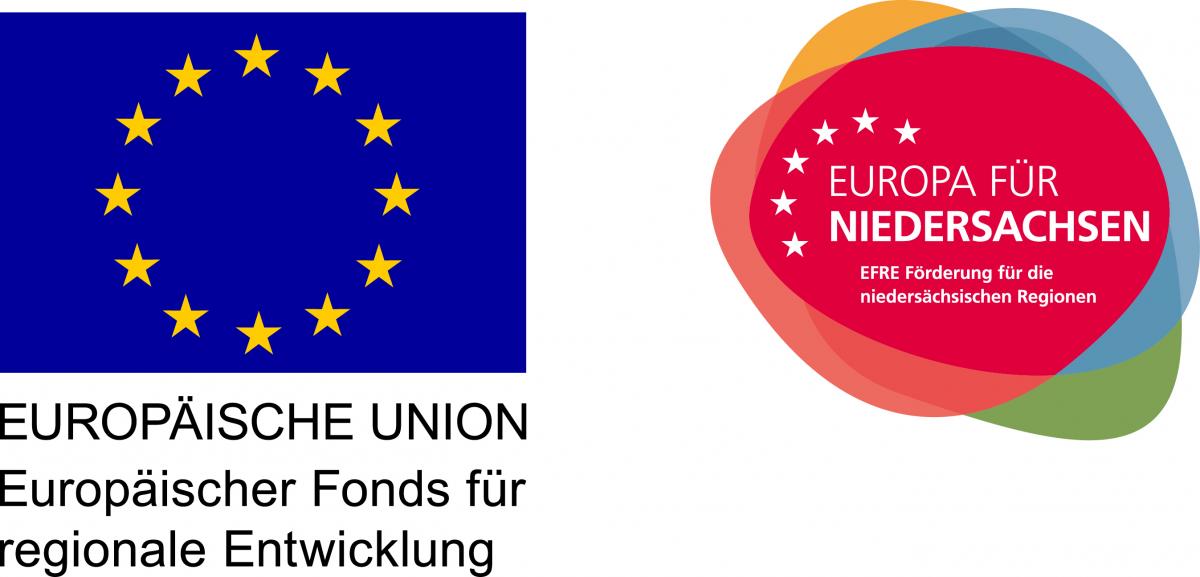
Qualitätskontrolle von Blutprodukten (Quality control of blood products)
Identification of markers for quality and stability of blood products using protein pattern, exemplarily demonstrated by the use of serum eye drops.
Today, biological drugs are indispensable for the treatment of many serious illnesses. The spectrum includes immunological products such as sera and vaccines, blood products, tissue preparations and advanced therapy medicinal products (ATMPs). It is a multi-layered group of drugs that have special requirements. Blood products are medical products which are blood, plasma or serum preserves, blood components or preparations of blood components obtained from blood or contain them as active ingredients. Pharmaceutical companies that market blood products are bound by a large number of regulations. However, there are no established analytical methods to verify the consistent quality or stability of biological drugs based on their ingredients. However, as most biological products are subject to their inherent variability, these must be defined by clear limits and strictly controlled by manufacturers and regulators. Since the Paul Ehrlich Institute, the regulatory authority for biological drugs, has recommended human serum for the treatment of dry eyes (Sicca-Syndrome), a quality and stability control is to be developed in this project for human serum or for serum eye drops via the peptides in this bodyfluid. This will be performed by the generation of specific protein patterns based on the proteome analysis.
35.

Proteomics for Chronic Kidney Disease Therapy
The social and financial burden that chronic kidney disease (CKD) imposes on European countries is significant. Currently 16.95% of the global population suffers from CKD. The prevalence of the disease has increased steadily during the previous decades and it is expected to reach alarming rates in the near future. It is thus apparent that an effective treatment for CKD will have a positive social and financial impact. The pathological basis of CKD is complex and the molecular mechanisms responsible for the onset and progression of the disease have not been fully elucidated. Their elucidation will enable the identification of specific therapeutic targets. Currently there are significant -omics datasets available on CKD deposited in databases. However, a marked deficiency of these datasets is the scarcity of kidney tissue proteomics data. PROCEED targets the mapping of kidney tissue proteomics changes in association to CKD phenotypes, integration of –omics datasets with clinical data by systems biology approaches, and subsequently prediction of novel therapeutic targets.
34.

Multi-omics molecular treatment targets for Prostate Cancer
The PCaProTreat Project targets on improving the Prostate Cancer (PCa) management and focuses on the identification of novel therapeutic targets for patients with an advanced disease stage. It has been demonstrated that the current medical practice has led to frequent over-treatment of patients exhibiting slow growing PCa (unlikely to progress in the absence of treatment), while for metastatic castration resistant patients that immediate treatment is required, no effective strategies are available. Therefore, new therapeutic options are required for advanced PCa. To address this clinical demand, PCaProTreat is focused on the comprehensive characterisation of the molecular background of PCa progression, based on which molecularly-driven therapeutic targets can be defined.
33.

Combatting the CardioRenal Syndrome: towards an integrative Analysis to reduce cardiovascular burden in chronic kidney disease
Successfully combatting a complex disease requires multi-disciplinary and methodically well-trained scientists. CaReSyAn strives to accomplish exactly this: we will train scientists to successfully integrate proteomics, clinical, experimental and bioinformatical analyses to enhance the understanding, diagnosis and therapy of the cardiorenal syndrome (CRS). CRS comprises disorders of the heart, vessels and kidneys, including the increased development of cardiovascular disease (CVD) in patients with chronic kidney disease (CKD). With ~45% of all deaths in CKD patients caused by CVD, the socio-economic burden of CRS is extremely high.
32.

Integration of high resolution -OMICS datasets towards personalized therapy in bladder cancer
"TheranOMICS Project aims at the recruitment of a highly-qualified research Associate to support the Innovation Business Idea of Mosaiques diagnostics GmbH (MOS). The Associate is expected to have expertise in statistics, computer science and biology. The objective is the integration of high resolution bladder cancer (BC) –omics datasets that are available at MOS to establish molecular profiles which can predict disease outcome and treatment response. The tasks include application of state-of-the-art bioinformatics tools in the development of two predictive tools that together will be offered as a companion test to assist patient stratification and predict response in BC drug development. The first tool will be based on molecular features associated with the clinical status and will enable the stratification of BC patients to those with the higher probability to progress. The second tool will be built on molecules/biomarkers associated with drug response and will enable to prediction of success of chemotherapy, as a test case study. MOS Business Innovation Idea is the development of the above predictive tools, to be served as a ""business-to-business"" product for pharmaceutical companies developing Bladder Cancer (BC) drugs.
31.

Molecular profiling of Bladder Cancer to support personalized medicine
BioMedBC Proposal is focused on improving the patient management of Bladder Cancer (BC). BC presents with the highest recurrence rate and the highest associated costs of all cancers. Due to the intrinsic heterogeneity, the investigated drugs in clinical trials, cannot be easily introduced in the clinical practice. Molecular profiles/ biomarkers (BM) with predictive potential are required to enable patient stratification. The BioMedBC proposal aims at the application of systems biology and cross-omics data integration methodologies to achieve: a) the molecular characterization of BC and b) develop signatures to predict the clinical outcome. To achieve these goals, integration of: i) high resolution proteomics datasets (planned to be acquired within BioMedBC), ii) existing datasets that were obtained in previous EU collaborative projects and iii) publicly available transcriptomics data, will be conducted, focusing on the molecular characterization of BC.
30.

Translational Research Network in Prostate Cancer
The Translational Research Network for Prostate Cancer (TransPot) program adopts an innovative, multidisciplinary approach, providing highly sought-after, effective solutions for incurable prostate cancer (PC).
The TransPot scientific objective is to obtain an unmatched depth of molecular, mechanistic and informatics systems-level disease understanding in order to improve the prognosis and treatment of lethal PC, aimed to (i) provide important insights into molecular mechanisms driving treatment resistant PC including castrate-resistant PC (CRPC), (ii) identify novel therapeutic targets, (iii) develop and validate predictive models for disease progression, prognosis and responsiveness to current and novel (co-)treatment options, and (iv) provide superior, clinically relevant tools and biomarker signatures for personalising and optimising CRPC therapy.
29.

PRoteome-based assessment of vascular disease for the Establishment of a Translational REsearch plATform
Cardiovascular disease (VD) is the leading cause of mortality and morbidity in Europe and worldwide. The objective of the PRETREAT consortium is to generate a joint SME/academic European preclinical platform for providing services for detection of VD and drug development. This platform will combine the use of urinary and/or blood peptidomics in humans and in preclinical animal models of VD, together with bioinformatics and systems biology, in order to better detect, stratify and decipher the molecular mechanisms of VD, develop new animal models with high similarity to human disease, and provide new tools for obtaining information on novel drug targets.
28.

The renal tract (kidneys, the ureters, bladder) is a complex organ system crucial for maintaining the body homeostasis. This organ system arises from different precursor pools through a complex program of patterning, differentiation and morphogenesis in embryonic development. Alteration of this program leads to renal tract malformations (RTM) that are incompatible with a healthy life. While some of these RTM can be surgically corrected, others develop into chronic entities that may lead to renal failure; the burden for the patients and for the socio-economic impact for the health systems is immense. Although congenital RTM are amongst the most frequent human birth defects, the different programs that direct normal and pathological development have remained poorly understood. The RENALTRACT project aims to address these deficits and provide a better understanding of the programs that underlie RTM and provide solutions to clinical problems. This shall be achieved by using a multidisciplinary team approach with partners working in complementary disciplines (developmental biology, renal physiology, Omics, clinical medicine).
27.

Chromatin3D: Chromatin Dynamics in Development and Disease
...... a Marie Sklodowska Curie Actions Innovative Training Network
Most, if not all, DNA-dependent transactions must function within the context of chromatin. To do so, chromatin fibres must reversibly alternate between compact and relaxed structural states. The latter ensures that the underlying DNA sequences are properly exposed to protein complexes involved in transcription and replication, recombination or repair. Defects in DNA-templated processes are thought to be causal to a number of detrimental pathologies, including cancer.
The basic unit of chromatin is the nucleosome, which is composed of two copies of the histones H2A, H2B, H3 and H4 wrapped with 146 bp of DNA. Based on the decondensed beads-on-a-string configuration of repeating nucleosome units, complex interactions between the main units can result in the progressive condensation of the structure. Chromatin’s ability for condensation is regulated in part by post-translational modifications of the N-terminal tails of histones, including acetylation, phosphorylation, methylation and ubiquitination. Modifications of the histone tails can influence both internucleosomal and chromatin fibres interactions. They can also facilitate the recruitment of chromatin associated proteins and chromatin remodelling complexes. Thus the chromatin structure is characterized by the degree of chromatin condensation, the location within the nuclear architecture and the type of histone modifications.
26.

Biomarker Guided Prostate Cancer Management
The BioGuidePCa project is designed to validate previously reported biomarkers for prostate cancer (PCa) management during surveillance of early and advanced PCa. With availability of PSA-screening an increase of insignificant PCa has been observed leading to over-diagnosis and overtreatment. Consequently active surveillance (AS) is an alternative to immediate therapy. AS is expectant management with curative intervention only for those patients with local tumor progression. Neuhaus et. al reported a peptide panel, derived from seminal plasma for the estimation of PCa aggressiveness. A main objective of the project is the validation of these biomarkers in regards of its use in AS. On the other hand, advanced metastasized PCa is still a deadly disease. The majority of patients initially responding to therapy progress after a median duration of 30 months. Therapy of castrate resistant prostate cancer (CRPC) relies on hormone therapy and cytotoxic chemotherapy.
25.

Asymptomatic vascular damage accumulates for years before patients are identified and subjected to therapeutic measures. The limited knowledge on early vascular disease pathophysiology is reflected in the lack of therapeutic options. SysVasc aims to overcome this limitation by mounting a comprehensive systems medicine approach to elucidate pathological mechanisms, which will yield molecular targets for therapeutic intervention.
The consortium is based on established multidisciplinary European research networks, including specialists in pre-clinical and clinical research, omics technologies, and systems biology from research intensive SMEs and academia; partners synergistically provide access to an extensive number of selected population-based cohorts and associated datasets, cutting edge modeling and simulation methods, and established cardiovascular disease (CVD) animal models and patient cohorts.
24.

Translation of novel Biomarkers for Bladder Cancer for clinical outcome prediction
Currently, clinical diagnosis and monitoring of bladder cancer (BC) relies on invasive, highly costly cystoscopy. Additionally, due to high recurrence rates BC treatment is associated with frequent follow-up of patients, making BC one of the most costly types of cancer in terms of management cost. Thus there is a clear clinical need for the development of new approaches for early detection of recurrence and progression.
Our proposal is based on the identification of novel biomarkers (BM) for BC recurrence and progression in urine and powerful technological platforms as extensive foreground work of the involved partners in the framework of FP7 EU projects DECanBio and GENINCA. The objective of TransBioBC is to translate this foreground work in the field of BC and to specifically employ the involved technologies (CE-MS and micro-ELISA), represented by the participating SMEs, for the development of non-invasive urine tests for routine monitoring of BC recurrence and progression. Our project uniquely integrates leading BC clinical experts with experts on proteome analysis and high throughput immunoassay development in an implementation-oriented workflow. Strict monitoring of assay analytical performance, and properly collected and well characterized clinical samples from existing sufficiently powered BC cohorts are combined with in-depth knowledge of regulatory requirements, analysis approaches to define added value and well designed business plans including multi-stakeholder dissemination and exploitation plans.
Collectively, TransBioBC will provide strong evidence for utility of the new BM directly in BC clinical management and as a secondary aim for usage in clinical trials and drug development.
23.

Clinical and system –omics for the identification of the MOlecular DEterminants of established Chronic Kidney Disease
iMODE-CKD integrates multi-disciplinary expertise in proteomics, metabolomics, transcriptomics, bioinformatics, pathology, and clinical science from leading academic and industrial investigators, establishing a unique training platform on biomarker research and Systems Biology. Special emphasis is placed on the application of a wide range of –omics and bioinformatics techniques to clinical research. This educational scope is placed in the context of a significant research objective: to improve quality of life of patients with chronic kidney disease (CKD) and diminish the severe health and economic burden imposed by this disease, by providing better diagnostic and prognostic means. Established CKD has been selected based on the accumulation of existing molecular data, and complementarity to active European programs focusing on early stage CKD in the context of diabetes and hypertension, in which participants of the consortium are actively involved.
22.

Whether you are a patient, a scientist, a company or a foundation involved in renal transplantation, we hope that you can find here all information you need about our European Commission - supported programme “BIOMARGIN”, aiming at discovering and validating robust non-invasive biomarkers for the follow up of renal grafts. In renal allograft recipients, 10-year graft survival has not improved over the past decades. Histological examination of graft biopsies has long been the gold standard to confirm graft injuries, but biopsies are invasive and histological grading is not very robust. There is thus a need for robust, non-invasive methods to predict and diagnose acute and chronic graft lesions, to improve patient treatment, quality of life and long-term graft survival.
21.
HOMAGE (Heart OMics in AGEing) regroups a unique team of experts from both academia and industry sectors to investigate heart failure (HF). HOMAGE aims at using “omics”-based technologies to identify biomarkers that reflect specific pathological pathways leading to HF, validate the predictive value of these biomarkers, and demonstrate the feasibility of an “omics”-based approach for patient stratification for personalised medicine. This approach can be beneficial in the management of HF.
20.

The FRAILOMIC initiative is a large scale research project aiming to identify the factors that turn frailty into disability.
The anticipated rise in the number of older people this century will inevitably be accompanied by an increase in the number of people with disabilities. Frailty, which comprises changes associated with ageing and chronic disease, usually precedes disability. Detecting frailty and intervening before it becomes disabling is more and more necessary as the population ages. Testing the clinical utility of the existing definition of frailty using a combination of clinical and laboratory biomarkers is pivotal.
The FRAILOMIC initiative is designed to use biomarkers to determine the factors that turn frailty into disability. The main objective is to develop clinical instruments to predict the risk of frailty, improve the diagnostic accuracy of frailty in day-to-day practice, and to assess the prognosis of frailty in terms of disability and other adverse outcomes.
Levels of blood and urine biomarkers will be measured in approximately 75,000 participants. These laboratory biomarkers will be combined with clinical biomarkers obtained from the same cohort to develop predictive, diagnostic and prognostic models in both the older general population and those people with attributes that confer a higher risk of frailty (e.g., cardiovascular risk factors). A selected set of biomarkers will be validated prospectively and assessed to find best fit models, which will guide the development of ready-to-use kits to be used in the clinical setting.
19.

TranCYST is a translational Research and Training Network focussing on Autosomal Dominant Polycystic Kidney Disease.
The Training Network’s mission is to provide a translational multidisciplinary Research Training Programme for talented young researchers, so as to prepare them for leading roles in Polycystic Kidney Disease research in European academia and industry. The TranCyst network includes 5 European academic groups involved in PKD research with a wide range of expertise ranging from basic scientists to clinical investigators, complemented with 2 private sector (SME) partners with their specific expertise. All partners apply innovative and state-of-the-art methodologies in their research.
18.
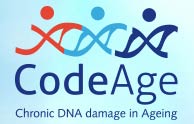
Ageing is an inexorable homeostatic failure of largely unknown aetiology that leads to increased vulnerability to disease limiting the quality of life in the elderly and creating high costs to the society. Until recently, the daunting complexity of the ageing process, the conspicuous lack of tools to study it, and a dearth of experimentally tractable model systems have greatly hindered any hypothesis-driven reductionist approaches to understand the molecular basis of ageing. Whereas molecular and cellular damage is thought to be a cause of ageing and age-related pathologies, little is known about the molecular events that underlie ageing or determine longevity. CodAge (Chronic DNA damage in Ageing) is an integrated approach in studying the role of Chronic DNA damage in Ageing and age-related pathology.
17.

BCMolMed (Molecular Medicine for Bladder Cancer) integrates complementary and multi-disciplinary expertise of two main (research-intensive SME-academia) and five associate partners with the objective to generate a state of the art training platform on application-oriented biomarker research and systems biology. Special emphasis is placed on the efficient employment of proteomics and bioinformatics techniques to clinical research, and understanding clinical phenotypes in a spherical manner, in line to main EU research priorities. Research is applied to the identification of biomarkers and molecular determinants of bladder cancer recurrence and invasiveness, (with emphasis on extracellular matrix proteins), due to its clinical significance and availability of molecular data.This integrative approach can be substantially beneficial and is expected to generate effective researchers and entrepreneurs in the fields of biomarker and drug target while providing valuable insight in bladder cancer molecular pathology and validated biomarkers.
16.
EURenOmics will integrate several established consortia devoted to rare kidney diseases with eminent need and potential for diagnostic and therapeutic progress (i.e. steroid resistant nephrotic syndrome, membranous nephropathy, tubulopathies, complement disorders such a haemolytic uraemic syndrome, and congenital kidney malformations). The Consortium has access to the largest clinical cohorts assembled to date (collectively >10,000 patients) with detailed phenotypic information and comprehensive biorepositories containing DNA, blood, urine, amniotic fluid and kidney tissue. The project aims to (1) identify the genetic and epigenetic causes and modifiers of disease and their molecular pathways; (2) define a novel mechanistic disease ontology beyond phenotypical or morphological description; (3) develop innovative technologies allowing rapid diagnostic testing; (4) discover and validate biomarkers of disease activity, prognosis and treatment responses; and (5) develop in vitro and in vivo disease models and apply high-throughput compound library screening.
15.

EURenOmics will integrate several established consortia devoted to rare kidney diseases with eminent need and potential for diagnostic and therapeutic progress (i.e. steroid resistant nephrotic syndrome, membranous nephropathy, tubulopathies, complement disorders such a haemolytic uraemic syndrome, and congenital kidney malformations). The Consortium has access to the largest clinical cohorts assembled to date (collectively >10,000 patients) with detailed phenotypic information and comprehensive biorepositories containing DNA, blood, urine, amniotic fluid and kidney tissue. The project aims to (1) identify the genetic and epigenetic causes and modifiers of disease and their molecular pathways; (2) define a novel mechanistic disease ontology beyond phenotypical or morphological description; (3) develop innovative technologies allowing rapid diagnostic testing; (4) discover and validate biomarkers of disease activity, prognosis and treatment responses; and (5) develop in vitro and in vivo disease models and apply high-throughput compound library screening.
14.

EuroKup - European Kidney and Urine Proteomics
Kidney diseases constitute a major health threat in all societies. Proteomics is the large-scale analysis of the proteins of biological samples. Application of proteomics methodologies in the investigation of renal diseases will catalyze the development of optimal diagnostic and prognostic tests. Despite preliminary successful efforts, the interactions between the multidisciplinary teams of scientists working on kidney diseases and proteomics are still limited in Europe. EUROKUP will foster the generation of a strong and growing multi disciplinary network of scientists from at least 20 European countries, focusing on renal and urine proteomics. The objectives of the Action focus on the identification of reference clinical centers for major kidney diseases and establishment of uniform clinical databases, standardization and optimization of procedures, integration of data to systems biology approaches and dissemination of information for application to diagnostic/prognostic procedures. Multiple scientific, technological and societal benefits to the European Union are expected, including but not limited to setting the urgently needed standards for clinical proteomics and translational research and improving the clinical situation in chronic kidney diseases.
13.

EU-MASCARA is a collaborative project that aims to improve diagnosis of cardiovascular diseases and prediction of cardiovascular risk by analysing a panel of biomarkers, including genetic, proteomic and metabolomic markers together with markers of inflammation, oxidative stress and cardiac remodelling. EU-MASCARA will rigorously validate biomarkers that have been proposed to be associated with cardiovascular disease and risk across different disease entities and also in independent general population samples. The most robust biomarkers will be implemented in novel biochip based assays for clinical use. The consortium has partners based in the UK, Austria, Belgium, Germany, Italy, the Netherlands and Spain (total 15) and the project is due to last for 4 years.
12.

NephAge is composed of 10 research groups who are taking an interdisciplinary approach to address key issues related to changes in kidney function during the aging process. The groups originate from a number of institutes including the Renal medicine division of the University Hospital Freiburg, the BIOSS excellence cluster and the FRIAS LifeNet School reflecting the University’s Life Science focus on Systems Biology and a long standing tradition in kidney research.
11.
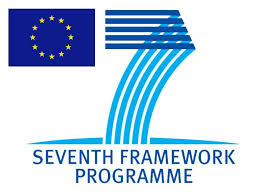
Host and viral factors in acute hepatitis C
Chronic hepatitis C is one of the most common chronic viral infections of humans and a major cause of chronic liver disease, cirrhosis and liver cancer. Still about 4 million new infections occur world-wide each year with 50-85% of patients progressing to chronic hepatitis C. Currently there is no marker to predict spontaneous viral clearance and to guide treatment decisions.
The major objectives of the HepaCute proposal are to develop biomarkers predicting the outcome of acute hepatitis C, improving the management of the related patients and thus decreasing the health burden of hepatitis C in Europe and Mediterranean partner countries (MPC).
The HepaCute consortium has evolved from a series of EC-funded projects on hepatitis C (HCVacc/HepCvax/Virgil/HEPACIVAC) and consists of world leading experts in HCV epidemiology, immunology, and virology, including partners from Egypt and Morocco, who have strongly influenced the current management of patients with acute hepatitis C in their respective regions, and contributed considerably to our understanding of mechanisms of spontaneous viral clearance. The HepaCute proposal is closely connected to ongoing national, European, and Egyptian networks on HCV research (HepNet, EASL, STDF), which will support HepaCute to make it a success.Together with another pertinent EU-funded research project, SPHINX, it actively contributes to coordinating EU-funded hepatitis C research with pertinent research projects funded in the MCP countries, in particular with hepatitis research projects funded under the Egyptian Science and Technology Development Fund (STDF).
10.
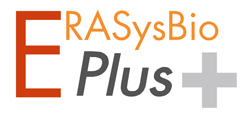
Salmonella are Gramnegative bacterial pathogens capable of infecting a wide range of hosts, including humans, pigs, cows, chicken and even plants. Salmonella typhimurium is the causative agent of various human and animal diseases, reaching from enteritis to typhoid fever. In the SHIPREC project, we propose to identify protein-protein interactions and pathways as a means to understand the crosstalk between plant, animal or human hosts and Salmonella.
9.
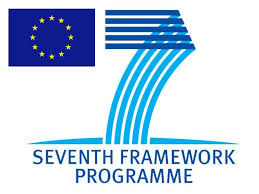
The number of patients with chronic kidney disease (CKD) is increasing steadily due to extended life expectancy, long lasting diabetes and obesity. Early unambiguous detection of patients at risk is both a clinical and scientific challenge. Capillary electrophoresis coupled to mass spectrometry (CE-MS), developed by Mosaiques Diagnostics (MD, SME, Germany), has been shown to be an excellent tool for the discovery and validation of urinary biomarkers of CKD. The aim of this project is to advance CE-MS technology in biomarker discovery and direct clinical applications alike through a) establishing the appropriate tools for its portability and b) through its combination with MALDI TOF MS, as a pre-CE-MS high throughput screening tool, in the form of an integrated MS diagnostic platform. Participating partners are highly complementary: the research intensive participating SME (MD) being the inventor of and expert on CE-MS, BRFAA bringing expertise on MALDI TOF MS profiling and Inserm having extensively collaborated with MD and recently acquired CE-MS being an excellent b-site for the development of tools for CE-MS portability.
8.

SysKid - A Collaborative research Project to Fight Chronic Kidney Disease
SysKid (Systems Biology towards Novel Chronic Kidney Disease Diagnosis and Treatment) a large-scale integrating European research project, aims at understanding chronic kidney disease in the context of diabetes and hypertension.
7.

European Uremic Toxin (EUTox) Work Group of the ESAO
The European Society of Artificial Organs (ESAO) decided to install work groups in several areas of progress in the field of artificial organs, such as artificial liver, heart support, apheresis and adsorption, tissue engineering, education and uremic toxins. Starting in October 1999, the European Uremic Toxins (EUTox) Work Group was launched by three of the members (R.Vanholder, B.G.Stegmayr and U.Baurmeister). In September 2000, at the occasion of the 27th ESAO-meeting in Lausanne, the Work Group convened for its first meeting. EUTox is also an endorsed Work Group of the European Renal Association - European Dialysis and Transplant Association ( ![]() ERA-EDTA) (President 2018: Carmine Zoccali).
ERA-EDTA) (President 2018: Carmine Zoccali).
6.
The collaborative EU project GENINCA focuses on novel methods of early diagnosis and treatment for cancer of colon and liver.
We will use highly sophisticated methods to characterise specific tissue samples undergoing the very early steps in the erosion of healthy cells. The tumour stem cells present within these lesions will be subjected to comprehensive molecular analysis. This will lead to a better understanding of their nascency and their characteristics which in turn will enable the development of new therapies aimed at specifically eradicating these cells and therefore to treating cancer more effectively.
5.
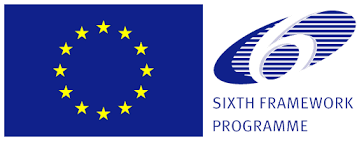
Over 7000 allogeneic haematopoietic stem cell transplants (HSCT) are carried out each year in Europe alone, as a treatment for leukaemia and lymphoma. Techniques and cure rates are improving but the overall survival rate remains between 40-60%. This project will develop new proteomic, biological and genomic tests and tools for early diagnosis and monitoring of patient response to novel therapeutics for the most severe complication of HSCT; graft versus host disease (GvHD) and will bring to the clinic a new generation of diagnostics that will significantly improve HSCT therapy and patient outcome. The Consortium unites 5 European SMEs with expertise and markets in genomic and proteomic testing, diagnostic assay development and biochips, with clinical partners selected for their world leading research in HSCT and access to clinical samples and patient groups. The project will focus on the role of relevant genes and biomarkers associated with acute and chronic GvHD, using retrospective samples from established biobanks and prospective clinical trials to: 1) Identify novel bio and genomic markers for diagnostics 2) Develop novel diagnostic tools using genomics, proteomics, in vitro bioassays and biochips 3) Test the new diagnostics in animal models & on clinical samples 4) Exploit the new tools for commercial use The above will be realised by: ' Development of diagnostic tests using single nucleotide polymorphism (SNP) analyses (SME IMGM), based on results from previous EC funded research (EUROBANK, TRANSEUROPE). - Using proteomics via mass spectrometry (evaluation/development of diagnostic patterns (SME MOSAIQUES), ELISA kits (SME APOTECH) and protein biochip prototypes (SME ORLA), for the development of fast high throughput technologies. - Development of novel reagents for monitoring graft versus leukaemia, GvHD and targeted therapy (SME MULTIMUNE; SME NASCACELL). - Comparative studies in an autoimmune disease model of inflammation; rheumatoid arthritis.
4.

The InGenious HyperCare Network of Excellence’s goal is that of integrating complementary but still fragmented experience in the mechanisms of blood pressure control and hypertension development, in phenotyping initiation and progression of organ damage and in exploring genetics, genomics and proteomics of proneness to hypertension and hypertension-related cardiovascular disease. A better prevention of hypertension and its cardiovascular consequences is an essential public health goal in Europe, where cardiovascular diseases are the major cause of mortality and morbility. The Network plans to integrate the research efforts of 31 research teams (including a SME) and 1 SME experienced in EC project management. A powerful instrument of integration will be the Programme of Joint Research Activities. A first group of research packages will be addressed to Mechanomics of Hypertension, i.e. identifying genetic, genomic and proteomic markers of disturbances in the major mechanisms (autonomic control, inflammation and oxidative stress, sodium handling) controlling blood pressure, as indicators of the risk of becoming hypertensive. The second group of research packages will be addressed to Mechanomics of Hypertension-Related Diseases, i.e. identifying the genetic, genomic and proteomic markers of the risk of developing a hypertension-related event (stroke, renal dysfunction, heart failure). Through these activities the Network will build up large integrated platforms of common phenotypes, genotypes and proteomic data in hypertensives, and assemble unique sets of comprehensive databases. Spreading of excellence beyond the Network will be done with the support of the European Society of Hypertension. The activity of the Network will continue after end of the EC funding, with the objective of contributing better diagnostic tools to identify subjects prone to hypertension, and patients prone to hypertension complications, with obvious benefits for health care in Europe.
3.

The role of chronic INfections in the development of CAncer
Approximately 17% of human cancer cases occurring world-wide are caused by one of 6 human viruses, Human papillomavirus (HPV), Epstein Barr virus (EBV), Hepatitis B virus (HBV), Hepatitis C virus (HCV), Human herpesvirus 8 (HHV8; Kaposi´s sarcoma herpesvir us) and Human T- cell leukemia virus I (HTLV-I). In addition, the bacterium Helicobacter pylori is the infectious agent responsible for the second highest number of infection-associated cancers and additional infectious etiologies of cancer are likely to e xist. The INCA Integrated Project aims towards a better understanding of (1) the molecular and cellular circuits involved in the development of cancers caused by these infectious agents, (2) the mechanisms of long-term persistence of these infectious agent s in apparently healthy hosts, and (3) which genetic factors contribute to cancer development. Based on this knowledge INCA will develop and validate (4) animal models to study chronic inflammation and cancer progression, and (5) new diagnostic procedures for the identification of infected individuals likely to develop infection-associated malignancies.
2.

The Identification of Risk Factors for the Development of Diabetic Nephropathy: The PREDICTIONS Project
Diabetic nephropathy (DN) is one of the most severe and life-threatening complications of diabetes mellitus. About 30% of patients with type 2 diabetes will eventually develop DN. Duration of diabetes as well as glycaemicand blood pressure control do not s ufficiently explain the risk of developing DN. About 31 genes have been reported to possibly contribute to DN susceptibility. A major susceptibility gene was mapped to 18q and a sequence variant in the CNDP1 gene was identified to cause a 3-fold elevated risk of DN. On the proteomic level, protein modifications by advanced glycation end-products (AGEs) are known to be sufficient to cause DN. AGEs are closely linked to reactive oxygen species (ROS) production. Different variables promise to have the poten tial of serving as biomarkers with high predictive value for DN risk assessment. To achieve the goals of the programme calling for identification of pathophysiological relevant genes and biomarkers correlated with onset, progression and response to therapy of DN, the project focuses on prospective research and case-control studies to: - Systematically re-evaluate available genetic data - Perform functional genomics for studying effects of gene variants - Study the influence of AGEs, ROS and carnosine a nd further predictive biomarkers. The latter will be realized both on the genomic (expression profiling in kidney biopsies) and proteomic level (mass-spectometry). In 3 multivariate analyses these markers will be correlated with the success of treatment wi th ACE inhibitors, irbesartan, and benfotiamine. A risk model will be developed for use by clinicians, who will evaluate the model prospectively in the future. This proposal will have significant impact on patient care. It is expected to provide scientif ic evidence for novel individualized therapeutic approaches. Although there is a focus on DN, the effects of DN-related markers on retinopathy will also be studied.
1.

Research into the human brain and its diseases is one of the key challenges of the 21st century. Among the many diseases affecting health, disorders of the brain are major causes for impaired quality of life and increasing health care costs. Despite some progress in understanding the molecular mechanisms of various neurological and psychiatric disorders, research is still far from being able to offer solutions to conquer them. In addition, the development of curative treatments or prevention strategies has not been, to date, very successful. A concerted effort of funding organisations and of research groups in this area, is thus needed to reach the long term goal of curing patients with disorders of the brain and nervous system, and helping their relatives.
Due to the importance of research in the area of brain diseases, a variety of independent national and regional funding programmes exist in most countries. NEURON Cofund avoids the problems of fragmentation in the national efforts by co-ordinating national and regional programmes for disease-related neuroscience research. This includes the 27 participating funding organisations and associated partners across Europe, Israel, and Canada.



